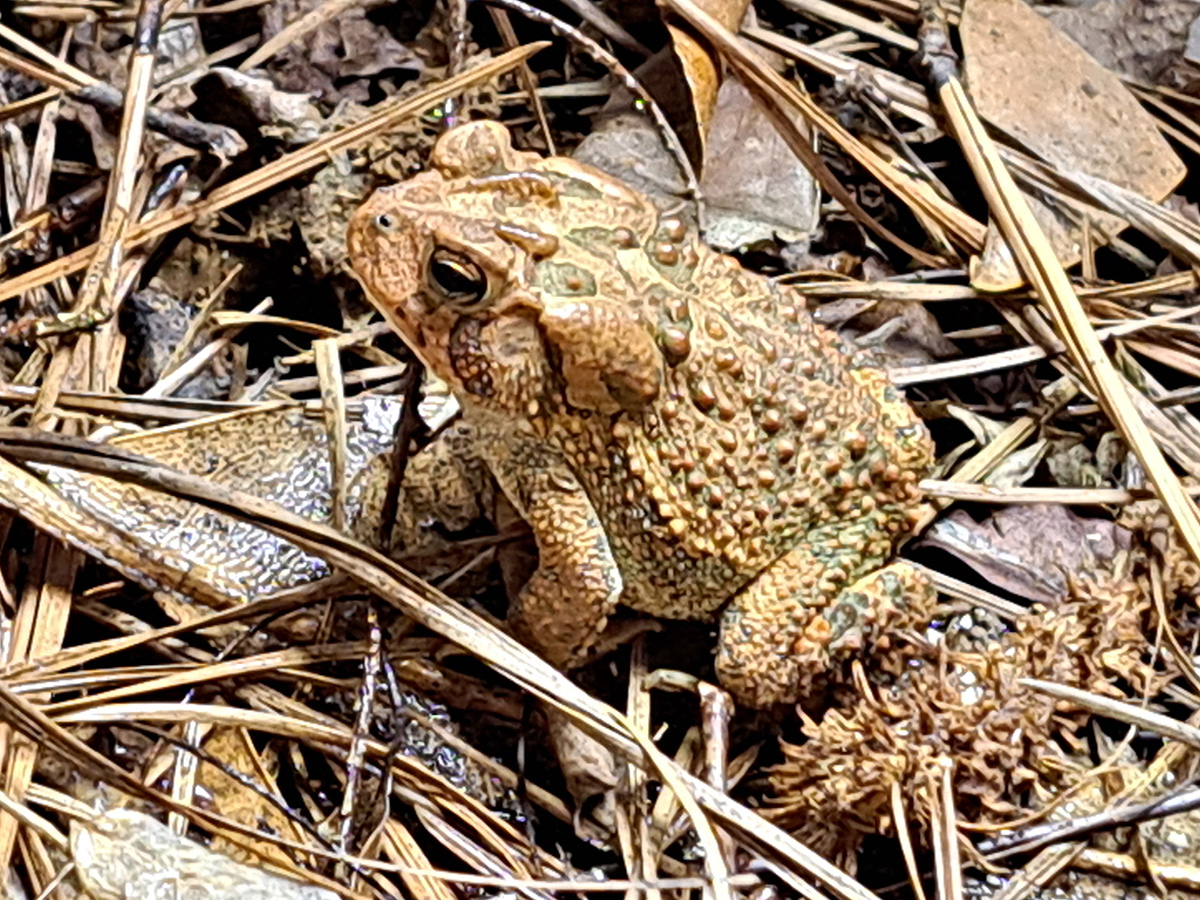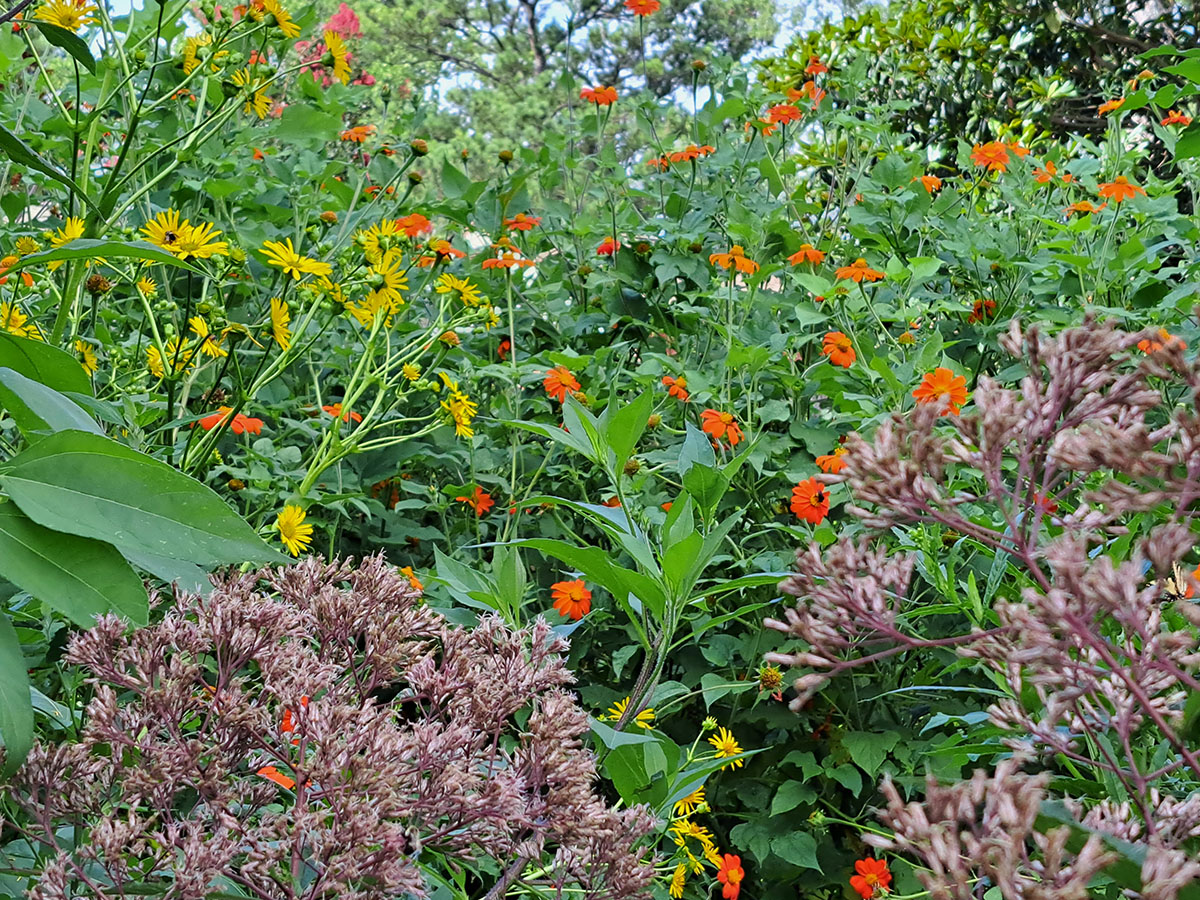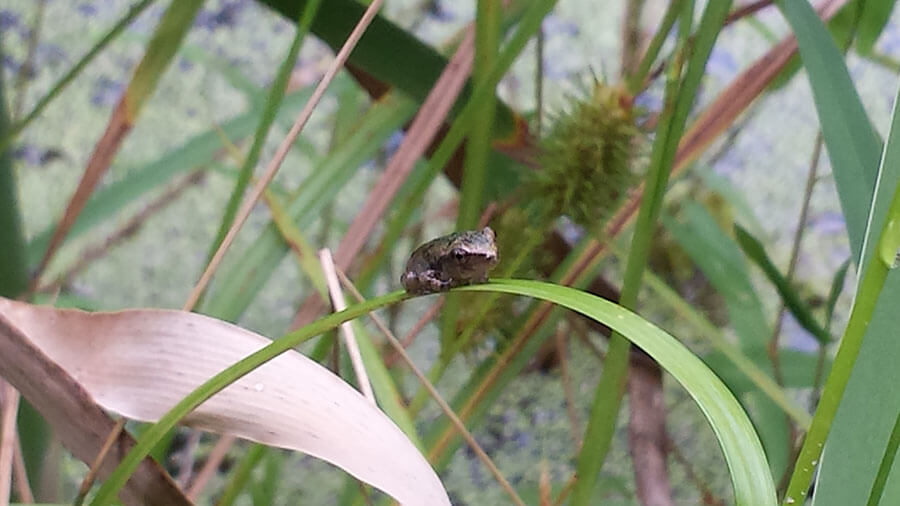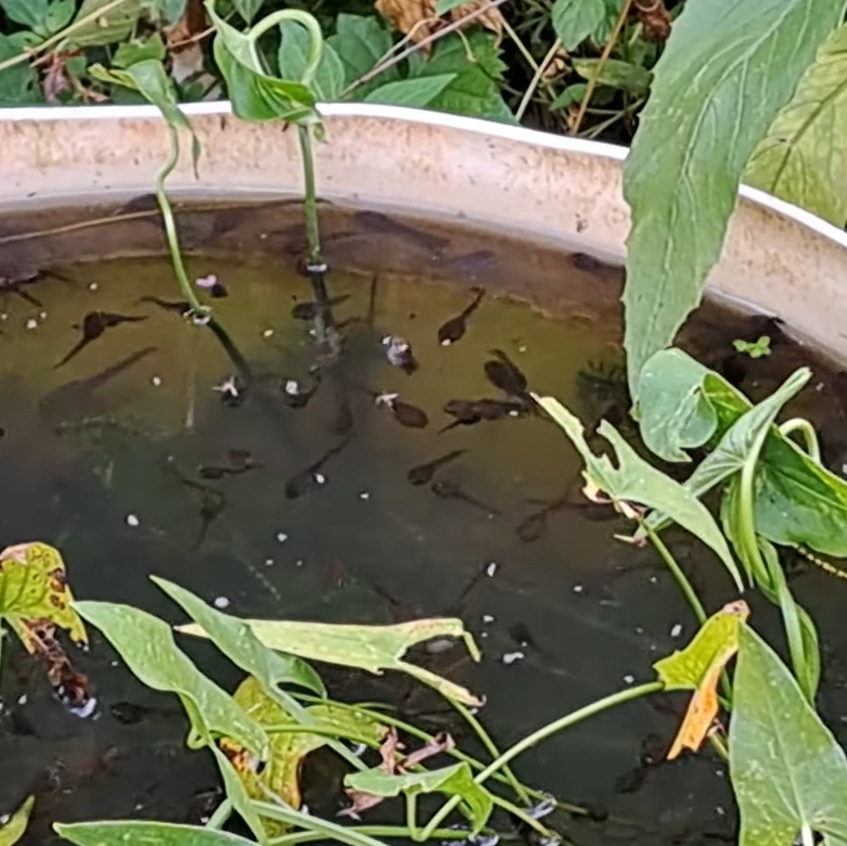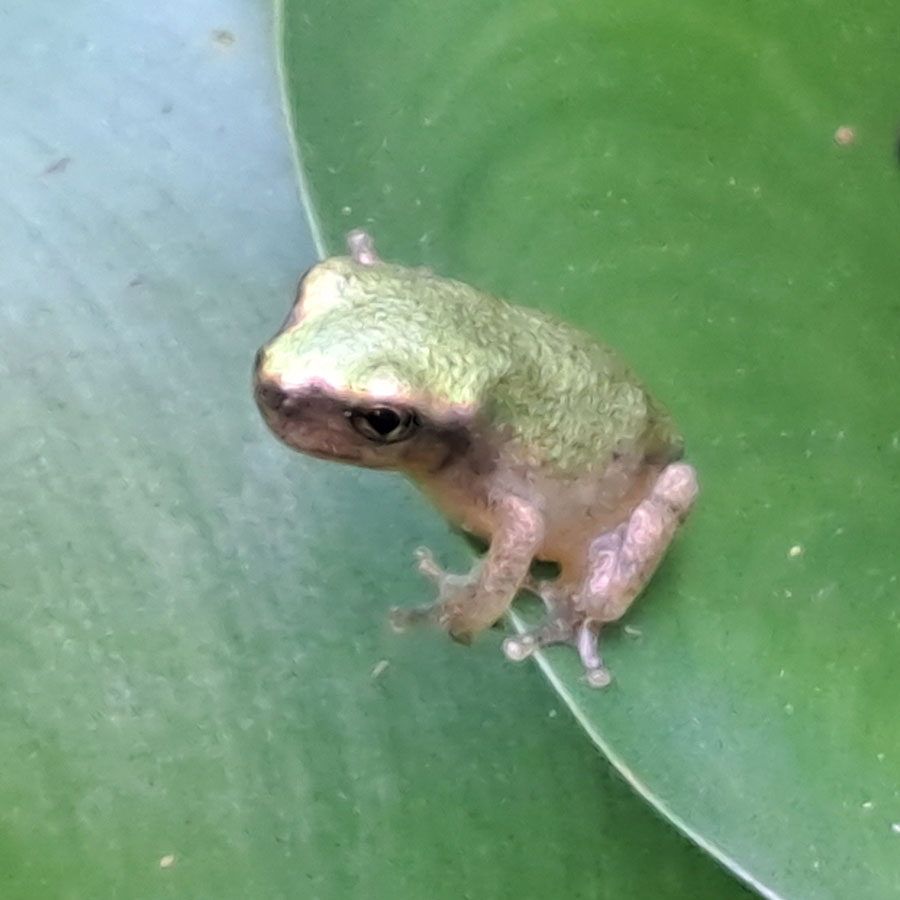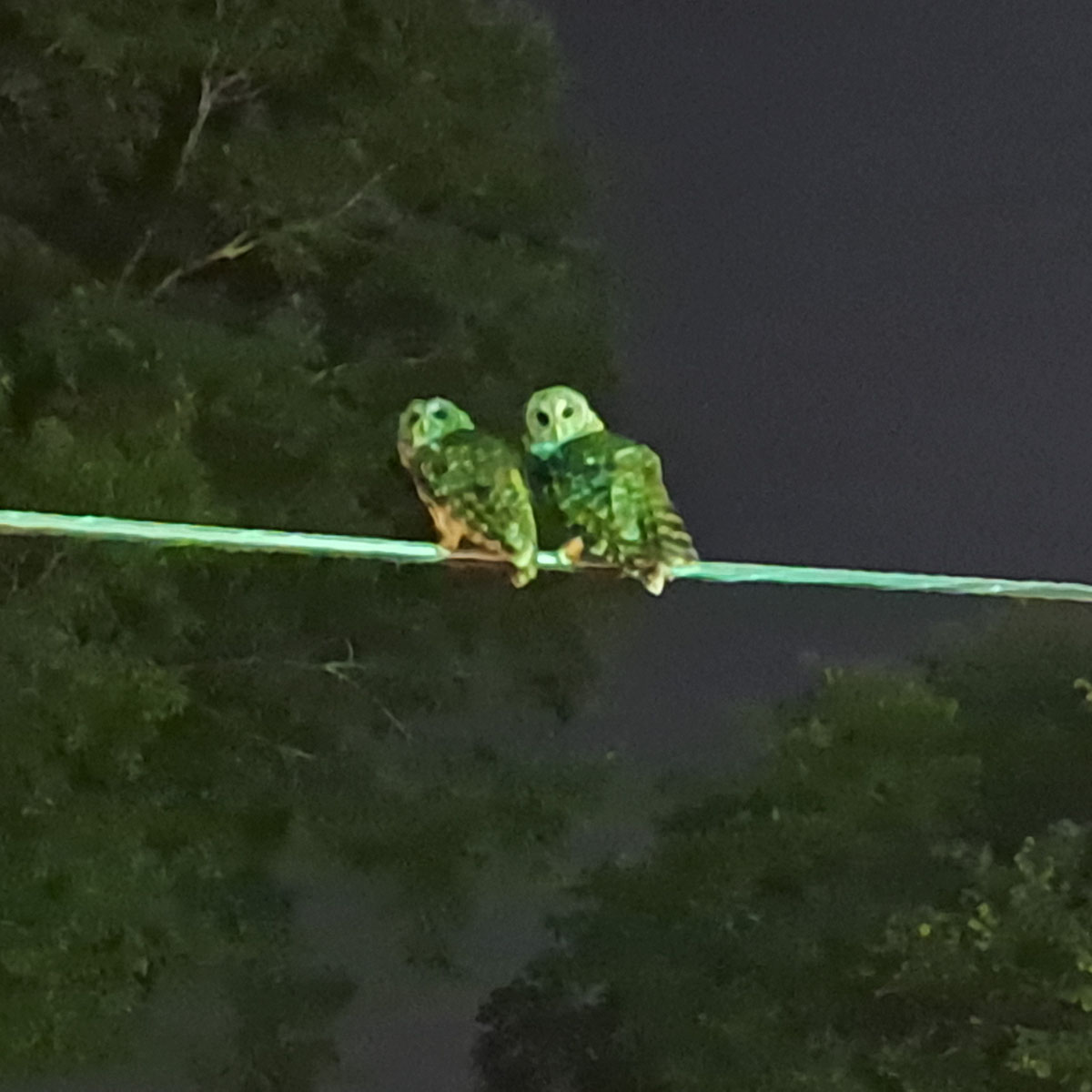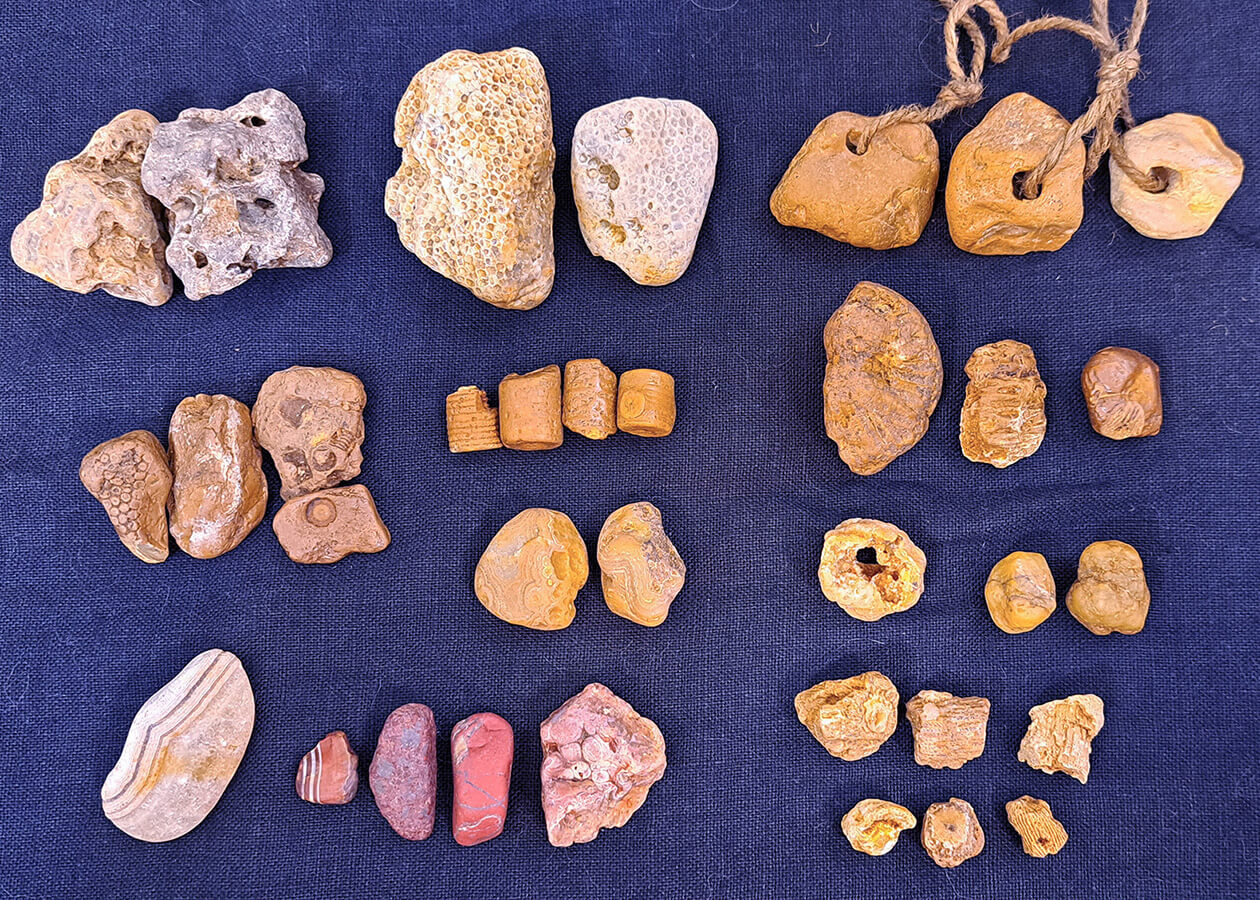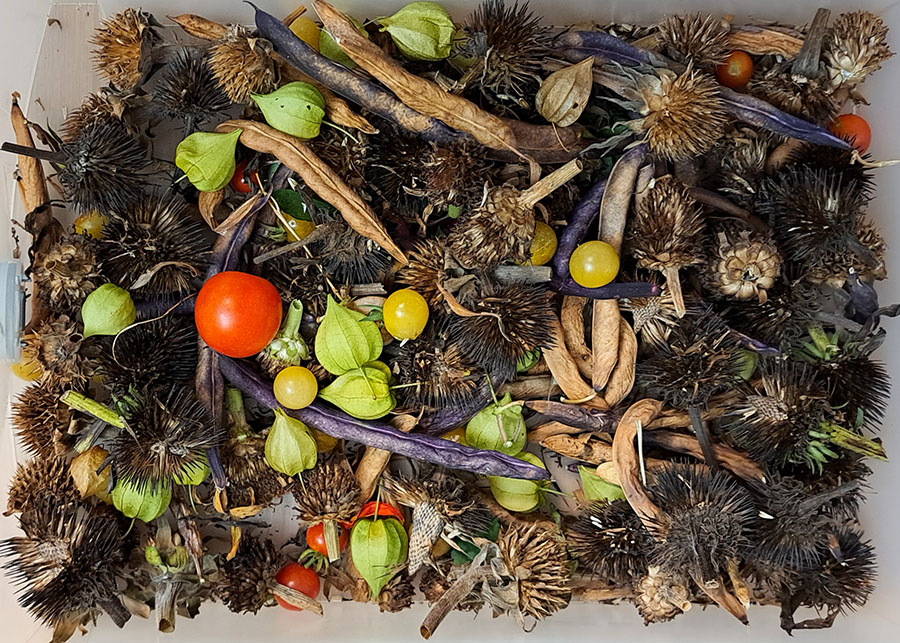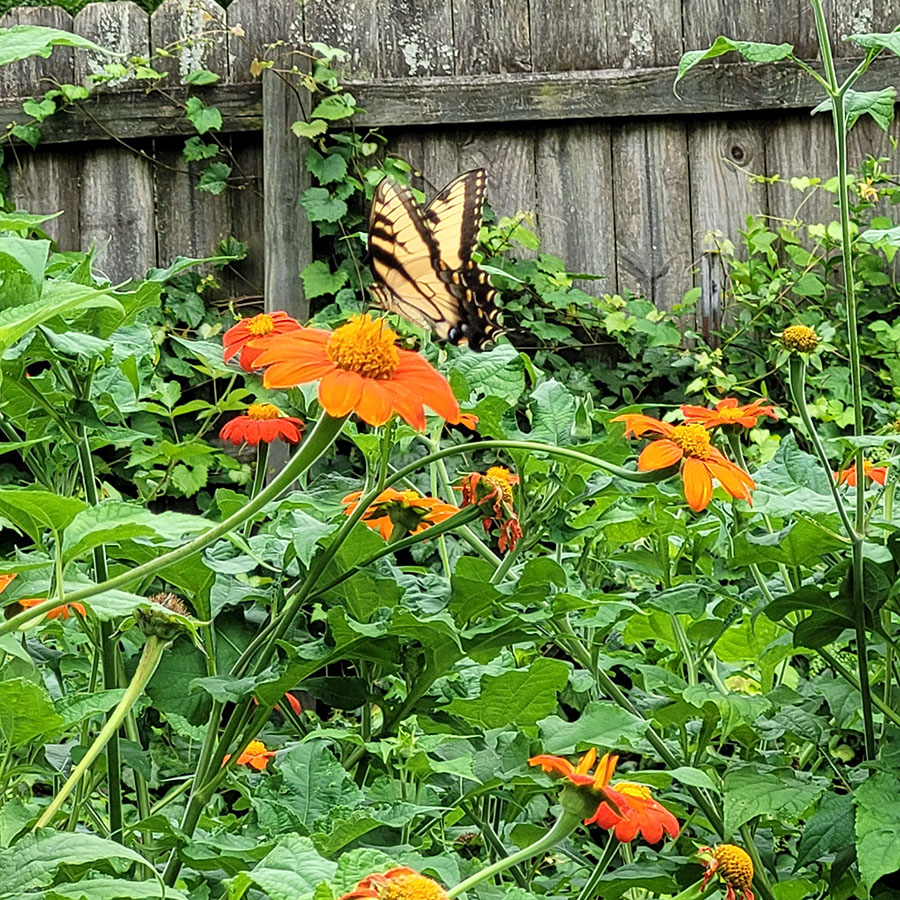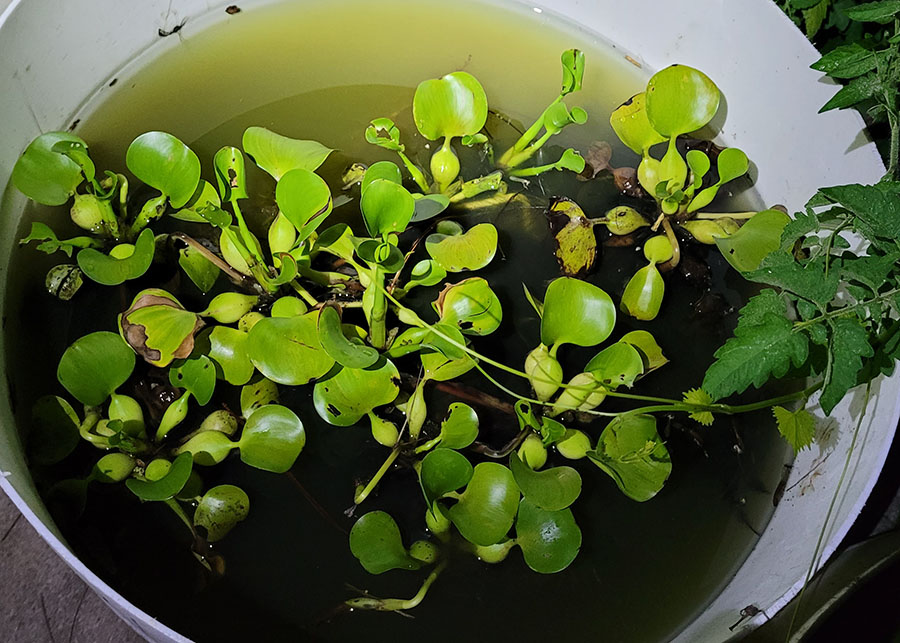In the spring of 2023, I purchased 200 Southern Toad (Bufo terrestris) tadpoles from a breeder for the purpose of restoring the local wild toad population. I raised the tadpoles in the patio breeding tanks used by my neighborhood’s tree frogs. I transferred the tiny toadlets to one of four plastic barrel bottoms that had… Continue reading Southern Toad (Anaxyrus terrestris) Breeders
Pollinator Meadow 2023
There was an eight-week drought in April and May that caused the local rabbits to eat a lot of plant varieties they normally ignore, but the rains came in June, and the year recovered somewhat. By August, there were numerous Tiger Swallowtail and Gulf Fritillary butterflies, although not as many as 2022. I have many… Continue reading Pollinator Meadow 2023
Tiny
This tiny frog is too small to eat a mosquito. Gnats and aphids and ants and baby spiders are probably what she can get into her mouth at this point. She has to watch out for everything that might want to eat her, everything from dragonflies to spiders to birds to frogs.
Tree Frog Tadpoles 2023
In 2023, I managed to keep the juvenile green frogs (L. clamitans) out of the breeding tanks, and so the tree frogs (H. chrysoscelis) were able to reproduce without interference. There was an eight-week drought in April and May, and so I suspected the year might be a disaster for wildlife, but when the rains… Continue reading Tree Frog Tadpoles 2023
Baby Tree Frogs 2023
This year was a hard year with no rains coming for 8 weeks during the months of April and May. Virtually the entire peach crop of Georgia was lost due to drought drop, and the rabbits in my yard ate zinnias and other plants they normally left alone. This meant that most tree frogs in… Continue reading Baby Tree Frogs 2023
Patrolled by Owls
When you sew native pollinator seeds, stop mowing, and allow natural meadow to emerge an replace a lawn, you will have many visitors. I’ve noticed that since my yard now has many songbirds and chipmunks and shrews and rabbits, there is usually a hawk or owl watching it hungrily. Needless to say, I see many… Continue reading Patrolled by Owls
Mississippi Valley Chert Gravel Fossils
The chert gravel deposits of the lower Mississippi River valley were formed by glacial and alluvial processes, which tumbled and smoothed stones from all over the drainage of that great basin, from Montana to Minnesota to Pennsylvania and every place in between. The fossils found in the chert gravels of the the lower Mississippy valley… Continue reading Mississippi Valley Chert Gravel Fossils
Seed Harvest 2022
Each year I feel anxious until I have some seed gathered for next year. The tangles I have growing in the front an back are pretty dense in terms of the number of species of vegetables and flowers. The vegetables include tomatillos, groundcherries, peppers, squash, pumpkins, okra, and several varieties of heirloom tomatoes. The flower… Continue reading Seed Harvest 2022
Sunflowers and Butterflies
The front and back yards are tangles of heirloom vegetables and wildflowers of many different types, and that draws a lot of butterflies, especially the large yellow tiger swallowtails. Mexican sunflowers (Tithonia rotundifolia) and various varieties of sunflowers dominate about half the area with full sunlight, with cosmos, coneflowers, and zinnias making up most of… Continue reading Sunflowers and Butterflies
Eutrophic Collapse
Eutrophication is when the phytoplankton population explodes and depletes all the oxygen and kill all or most of the animals. This happens when nitrogen and phosphorus nutrients build up and cause the algae to bloom. The ecology in Experiment Tank #6 crashed from Eutrophic Collapse. How did it get overwhelmed with nitrogen and phosphorus? Because… Continue reading Eutrophic Collapse
